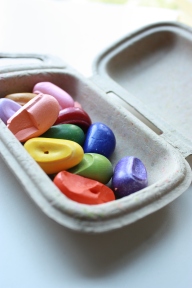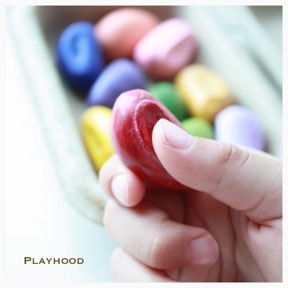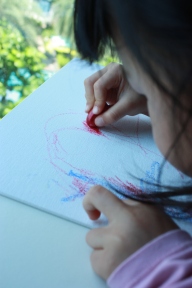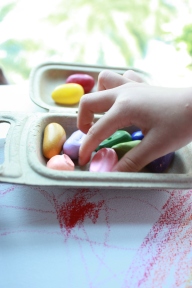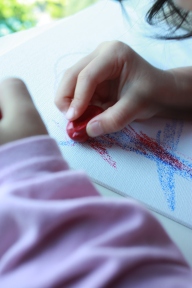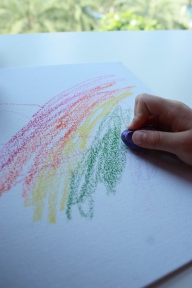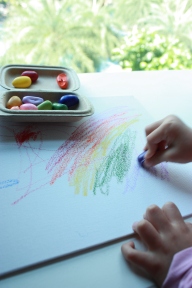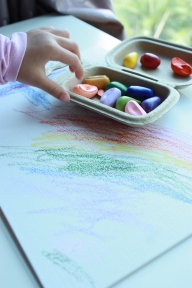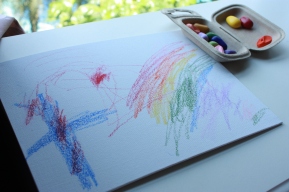Continuing our series this week on teaching shapes, we decided to make print art using wooden blocks from our toy collection!
I put together the art materials comprising of a carton box, some wooden blocks with different shapes as the base, as well as some colour paints.
Identifying shapes on the blocks
Art has always been my girl’s favourite learning activity. Upon seeing the materials, she was excited to get started! First, I brought her attention to the wooden blocks and asked her what shapes she could recognize. She identified different shapes for various blocks, and for some, she could pin point more than one shape in one single block. One example was the prism. She could say out the square and the triangle shapes for the prism. This simple process sharpens her awareness of different shape surfaces for three-dimensional objects.
Printing of the shapes
To demonstrate, I placed a block on some paint, and showed my girl the base of the block. She immediately pointed out the circle shape to me. Then I made the circle print on the carton box by pressing on it. She was intrigued by the shape created, and couldn’t wait to make some more of her own. 
She printed many circles with different colours and the experience of sensory art was amazing for her! She experimented with the other blocks, and gradually learned to recognise and predict the shape that would be printed with the block she has chosen! All this while, she was using her visual descrimination to ascertain which shape print would be made.
My little artist was so engrossed with making the shape prints, that she filled the spaces on the carton box with colourful shape prints in no time! Check out her little masterpiece.. She requested for me to put it up for us to admire. I couldn’t feel any prouder of her little art achievement!
Artwork as visual reinforcement
Now, everytime she encounters her little print artwork, she will without fail point to it and say out the names of the shapes. There is no better way of reinforcing the new concepts than letting her create something she can take pride in and motivate her to internalise the learning on her own!













































